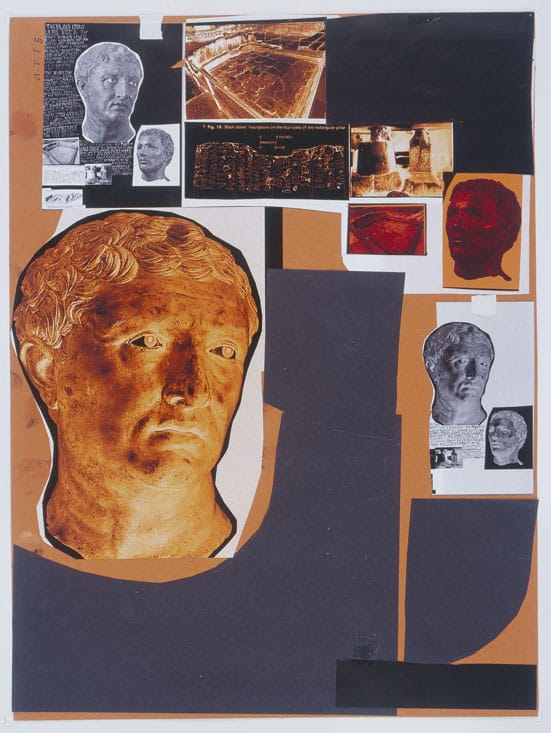7th December 2007 — 10th February 2008
I walked into this temptingly titled exhibition rather grumpily, having
circled the surrounding streets for ages in search of a parking space.
In this frame of mind I initially saw little to set it apart from a
number of provincial collections I've half-heartedly wandered around on
rainy afternoons: eclectic groups of artefacts, together by
happenstance, like a jumbled accumulations of ornaments on an
octogenarian's mantelpiece. Some of the familiar work shone out
immediately. A Jenny Holzer sign brightened me for a moment, but I was
trying to discern Steven Claydon's hand in the affair and, besides his
bronze one with a section of armature revealed partway down a finger,
was drawing a blank.
He must like hands. There's one on a plinth, also disembodied,
once belonging to a mannequin, faded and cracked with age. I expected
it to be from the days of the surrealists, but was surprised to learn
that it was dated 1976. And heads. A vitrine contains a Giacometti, an
Epstein. Nearby, upon a hessian-lined table that extends diagonally
across the main room, a goggled Frink. There are Claydon bonces. One,
white, bearded, resembling a Viking Hemingway with white earflaps,
crowned with a dark pudding-bowl headpiece. 'Spaka Spou (deposed
deity)' says the catalogue. Sigmund Freud, whose house I'd driven past
three times earlier, sprung to mind. I was thinking of his study,
heaving with archaeological curios.
His collection includes deities and mythical creatures from
antiquity that he used as metaphors for psychoanalysis. He tended to
gesture towards particular ones to illustrate remarks he made to his
patients. Freud was evidently a compulsive collector. Like the work in
this exhibition, his pieces had not been selected or arranged according
to chronology or place of origin. Instead they served as points of
departure. Freud's objets
emanated from scattered cultures, and time-wise, span millennia.
Claydon's selections, at least in terms of their actual creation, are
confined to the 20th and 21st century western art canon. Mournful
drones and discordant caterwauling issue from a corner of the room. A
video by Jim Shaw depicts bespangled figures with giant Mr Potatohead
ears, noses and miscellaneous body parts performing some kind of
delirious Shriner ceremony within a curved wooden wall of death.
Outside the viewing area is displayed one of the props: Latex rubber
testicle bagpipes. A blanched gargoyle by Thomas Houseago crouches in
the corner below Picabia's 'Femme a l'Idole' featuring a stocking-clad
woman standing with her knee in the crotch of a fantastical ebony
sculpture. The warm tobacco glow of this image is one of the few
smudges of colour Claydon has allowed in this room, the hues
complementing those of Burra's 'Design for a Drop Curtain' on the far
wall showing grotesque masked entertainers and hooded cloaked women
throwing shapes in a brutist city square receding to an exaggerated
vanishing point. Throughout the exhibition he has 'used' colour
sparingly. He has considered the effect of the pieces in each room like
an interior decorator, prioritising tone over colour, and, in the case
of a wall of unphotographable off-white paintings by Keith Coventry,
dispensed with tone altogether. A smallish dun-coloured Lynn Chadwick
sculpture leans against the wall below them. One exception, a lurid
pink haemorrhoid cushion of aluminium by Franz West in the adjoining
room sits below a video by Mark Leckey entitled 'The March of the Big
White Barbarians.' To a rousing chant, a slideshow of corporate
sculptures, the kind that are so ubiquitous in cities, standing stock
still as only sculptures can, where they have been sited, regardless of
being in or out of fashion, great big lumps of bronze and stone that
ultimately become invisible to all but the tourists. The video includes
a Chadwick. Could it be the one that actually did disappear recently,
half-inched and believed to have been melted for scrap? A lot of the
elements in this show repeat and resonate in other parts of the
gallery. Maquettes of the Paolozzis in the video can be seen again on
the hessian table. A miniature Incredible Hulk in plaster has all the
musculature of the collages of Roman statues in the next room,
accompanied by scratchy handwritten comments and transcriptions of
inscriptions carved on the plinths: 'Whoever defies or contaminates or
even merely traverses this plinth let him be forfeit to the shadows of
the underworld.' Again I'm fooled by the style of the pictures. They
have the austerity of the war years about them. Nope. Richard Hawkins,
2006-2007. Hidden away in an arched side room is Simon Martin's
'Carlton'. The video lovingly tracks the contours of Ettore Sottsass's
totemic bookshelf whilst a soothing night-time radio voice intones
pithily, ruminating on many issues that Claydon seems to be hinting at
in this fastidiously planned arrangement. He has written a manifesto of
sorts in the catalogue, which jubilantly veers between hardboiled art
theory and full-on neo-dada scatological rant, cunningly ending in a
resounding implosion as he claims the title of the show, allegedly
taken from a Charlie Chan story, never actually existed. Strange
events? Later, I found myself in the toilet downstairs, appraising the
white porcelain, trying to understand the pipework, and then, the
display of shoe soles in the dry cleaner's and the pictures of English
hunting scenes on the wall of the Hellenic restaurant in the Finchley
road. Perplexing.
PH
Camden Arts Centre
Arkwright Road
London NW3 6DG
http://www.camdenartscentre.org/
Open
Tuesday-Sunday, 10am-6pm
Wednesday, 10am-9pm

Richard Hawkins
Urbis Paganus I
5" 2006
Private Collection
Courtesy Galerie Daniel Buchholz